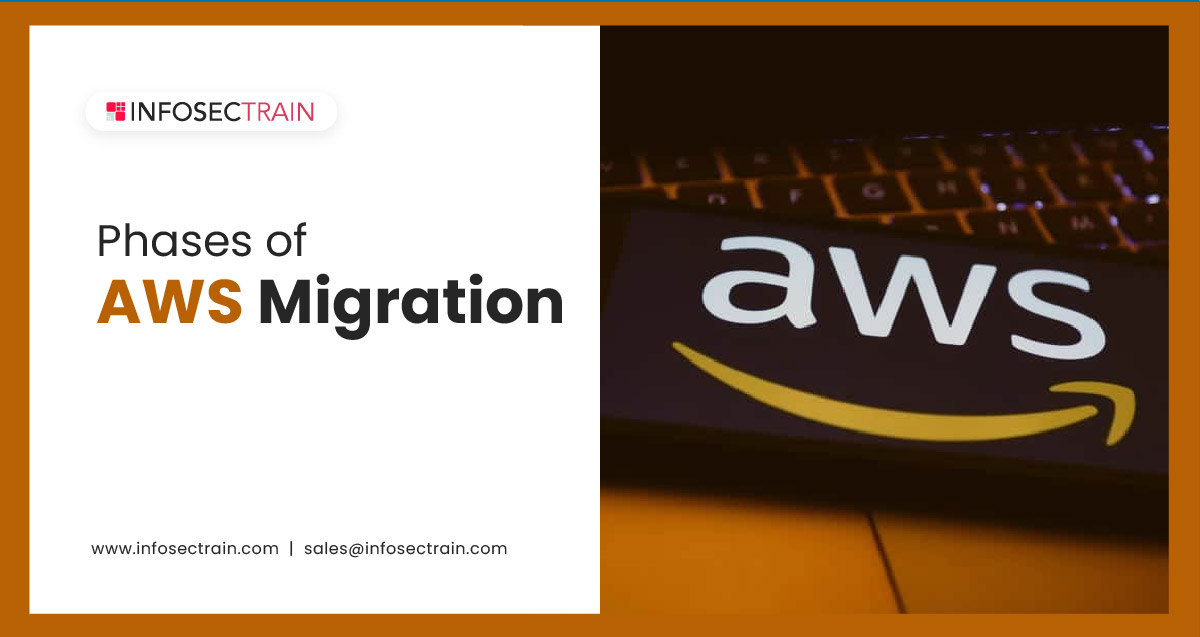Phases of AWS Migration
Cloud is the most commonly used platform in every organization, irrespective of size and strength. Amazon Web Services (AWS) is a globally recognized and fastest-growing cloud platform. It provides scalable cloud computing solutions for around 200 various cloud-based services. These services help developers to develop the application seamlessly. Migration is one of the AWS services that help to build new systems in the organization. In this comprehensive blog, we are going to discuss the phases of AWS migration.

Table of Contents
What is AWS?
What is AWS Migration?
Phases of AWS Migration
AWS Migration Tools and Services
AWS Migration Best Practices
What is AWS?
Amazon Web Services (AWS) is a cloud platform that provides scalable, flexible, reliable, and cost-effective cloud computing solutions. It is an easy-to-use cloud computing platform offered by Amazon, and AWS delivers organizations tools such as database storage, compute power, and other services. It was launched in 2002, initially built for retail operations, but later it has grown more prominent in providing over 200 services, of which migration is one of its services.
What is AWS Migration?
AWS Migration is the process of migrating the project objectives and the data from the on-premise data center to AWS. Organizations can perform migration based on many factors, such as global market expansion, the need for standard architecture, hardware upgrades, data center leases, software license renewals, or location requirements to meet regulatory compliance.
Phases of AWS Migration
AWS Migration is designed to help organizations execute the migration of a vast number of applications. The AWS Migration includes the following phases:
1. Prepare : Preparation is the first phase of the database migration, designed to identify the interdependencies between the database and the application. It analyzes the workloads and determines the migration categories from simple rehost to re-architect migration. In this phase, the organization has to involve the leadership team to communicate frequently and make excellent decisions about the migration.
2. Plan : In this phase, a complete portfolio analysis of interdependencies, migration strategies, and priorities is defined to build a successful migration plan. Based on the information collected in the above phase, the database migration strategy is defined among the 7Rs- Rehost, Replatform, Relocate, Refactor, Retire, Repurchase, and Retain. The migration strategy is determined by the organization’s migration requirements, such as financial limitations, schedule, and personal needs.
3. Migrate : In this phase, the migration process begins with defining the target database, migrating the source data to the target database, and validating the data. It is an iterative method that includes several cycles, and each process consists of the following steps:
- Converting the schema
- Migrating the data
- Updating the application
- Testing the migration
- Cutting over to the new database
After completing the performance and functional testing, you can cut over to the new database.
4. Operate and Optimize : Once the application is migrated, you can optimize the new application by utilizing the AWS services and features within a few clicks. AWS enables us to build and deploy innovative applications within minutes. It provides the regular updates required to install the application and allows 24/7 support on tracking system maintenance and updates after migration.
AWS Migration Tools and Services
Here are some of the top AWS migration tools and services:
- AWS Migration Hub
- AWS Application Discovery Services
- AWS Cloud Adoption
- AWS Migration Acceleration Program
- AWS Server Migration Service
- AWS Marketplace
- AWS Database Migration Service
- VMware Cloud on AWS
AWS Migration Best Practices
The following are the best practices for AWS migration:
- Define the objectives of migration.
- Develop a Cloud-first approach to accelerate migrating procedures and strategies.
- Create and share a good cloud governance model which includes roles, responsibilities, policies, procedures, structures, budgets, and other elements.
- Educate the staff on AWS.
- Identify the dependencies and assets for migration.
- Automate the manual process to save cost and time.
- Use AWS-managed services.
- Track the performance by implementing monitoring strategies.
- Use AWS Enterprise support for guidance.
- Use cloud-native monitoring tools.
- Use managed detection and response (MDR) to manage security controls and configurations and provide robust protection for organization assets.
Become Cloud Professional from InfosecTrain
InfosecTrain is a globally recognized ed-tech platform that offers a wide range of Cybersecurity, Information security, and Cloud online certification courses. It provides an instructor-led training program with a highly experienced instructor who guides you in understanding the concepts in detail. InfosecTrain offers many online Cloud certification training programs that help you to get a complete understanding of cloud technology.
If you want to become a cloud professional, check out our list of cloud Certification courses, choose your suitable course, and enroll to get certified.



 1800-843-7890 (India)
1800-843-7890 (India) 
